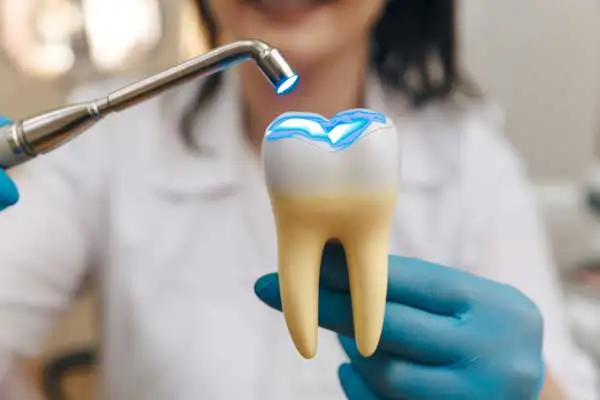Pros and Cons of Glass Ionomer Fillings
Posted on 8/1/2025 by Premier Dental Center |
 Dental fillings are an essential part of oral care, helping to restore teeth that have been damaged by decay or other issues. When choosing a filling material, there are several factors to consider, including cost, durability, and aesthetics. Glass ionomer fillings are a popular option for many patients, offering a unique combination of benefits and drawbacks. Dental fillings are an essential part of oral care, helping to restore teeth that have been damaged by decay or other issues. When choosing a filling material, there are several factors to consider, including cost, durability, and aesthetics. Glass ionomer fillings are a popular option for many patients, offering a unique combination of benefits and drawbacks.
What are Glass Ionomer Fillings?
Glass ionomer fillings are a type of tooth-colored filling material made from a mixture of acrylic acid and fluoroaluminosilicate glass powder. Unlike traditional amalgam fillings, which are silver in color, glass ionomer fillings closely resemble the natural color of teeth, making them a more aesthetically pleasing option.
Pros of Glass Ionomer Fillings
| • |
Natural Appearance: Glass ionomer fillings blend seamlessly with the surrounding tooth structure, making them virtually invisible. This is particularly beneficial for fillings in the front of the mouth, where aesthetics are a major concern. |
| • |
Biocompatible: Glass ionomer fillings are biocompatible, meaning they bond chemically with the tooth structure. This bond helps to prevent bacteria from leaking into the tooth and causing further decay. |
| • |
Fluoride Release: Glass ionomer fillings slowly release fluoride over time, which helps to strengthen the tooth enamel and prevent future cavities. |
| • |
Conservative Tooth Preparation: Glass ionomer fillings require less tooth preparation than other types of fillings, meaning more of the healthy tooth structure can be preserved. |
| • |
Cost-Effective: Glass ionomer fillings are generally less expensive than other types of tooth-colored fillings, such as composite fillings. |
Cons of Glass Ionomer Fillings
| • |
Weaker than Other Fillings: Glass ionomer fillings are not as strong as other types of fillings, such as amalgam or composite fillings. This means they may be more prone to chipping or breaking, especially in areas of high biting force. |
| • |
Longer Setting Time: Glass ionomer fillings take longer to set than other types of fillings, which may require you to avoid eating or drinking for a longer period of time. |
| • |
Susceptible to Staining: Glass ionomer fillings are more susceptible to staining than other types of fillings, especially from coffee, tea, and red wine. |
| • |
Not Suitable for All Cavities: Glass ionomer fillings may not be suitable for all cavities, particularly large cavities or those located in areas of high biting force. |
Choosing the Right Filling Material
The best type of filling material for you will depend on your individual needs and preferences. Discussing your options with your dentist is essential to make an informed decision. Be sure to consider the size and location of the cavity, your biting force, your aesthetic concerns, and your budget.
Conclusion
Glass ionomer fillings offer a unique combination of benefits and drawbacks. They are a natural-looking, biocompatible, and cost-effective option that can be a good choice for certain types of cavities. However, it is important to discuss the pros and cons with your dentist to determine if they are the right choice for you.
|
|